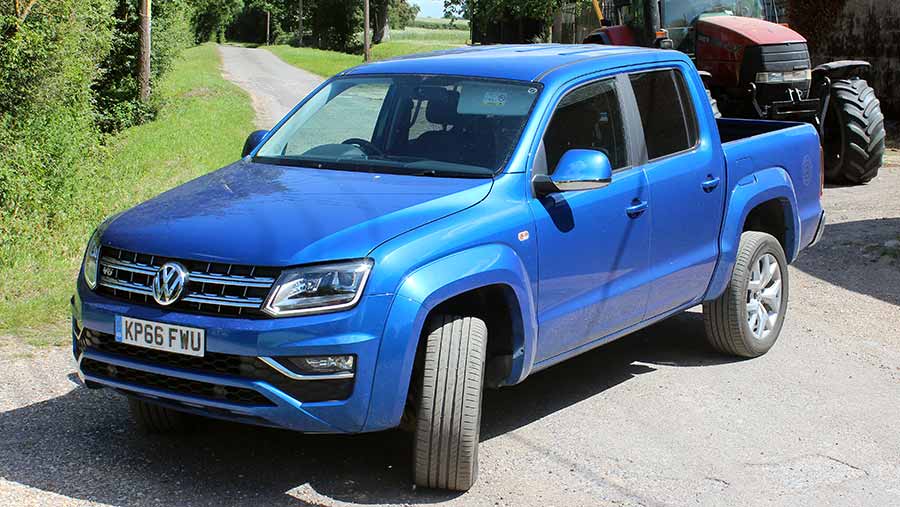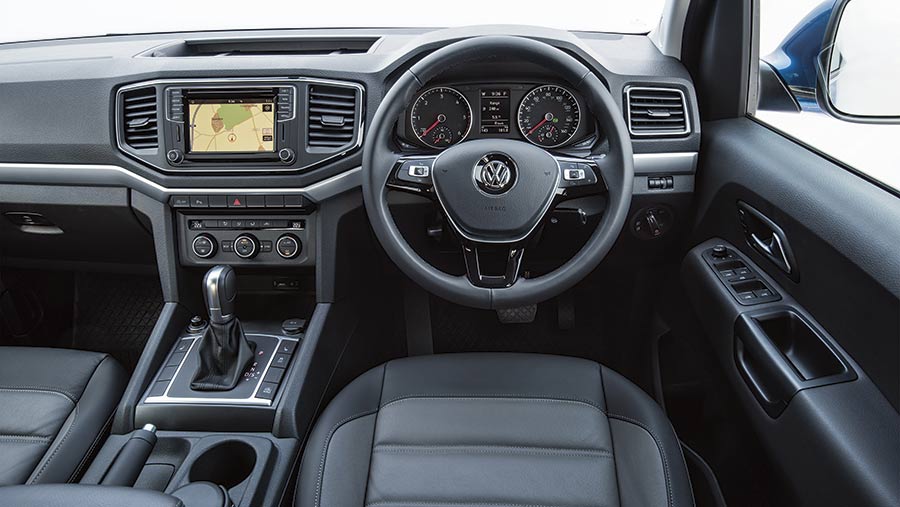On test: V6-powered VW Amarok almost the complete package
At last, farmers finally have the option of a V6-powered pickup in the shape of the latest Volkswagen Amarok.
The new, heavy-hitting six-bore burner is a big step up from the comparatively lame inline four, two-litre that went before and goes against the grain of an automotive market intent on slimming down its engines to keep emissions in check.
So, while owners of the oldie make do with 178hp and 420Nm torque, the biggest dog in the new line-up gets a mighty 224hp and 550Nm.
See also: On test: Does the new 1.9-litre Isuzu D-Max have enough oomph?

Those stats comfortably trump the Ford Ranger, too – its 3.2-litre five-cylinder offers up 470Nm torque and 200hp, though it does have the edge when towing (more on that later).
But, before you sign the cheque, consider this: it’s £33,000 for the basic model and a gnat’s doodah from the £40,000 mark once the VAT has been stacked on top. By anyone’s standards that is serious moolah for a would-be farm runaround.
Amarok Aventura 3.0 V6 TDI
Powertrain 3.0-litre TDI V6 diesel
Transmission Eight-speed auto
Running gear Permanent four-wheel drive McPherson-type strut front suspension; rear axle with leaf springs
Top speed 119mph
0-62mph 8sec
Max power 224hp@4,500rpm
Max torque 550Nm@2,750rpm
Fuel consumption (combined) 36.2mpg
Kerb weight 2,176kg
Payload 1,114kg
Towing capacity 3,100kg
Price ex VAT £32,865
Looks
Aside from the headline-grabbing engine, VW has kept upgrades to a minimum.
It’s still one of the better-dressed pickups (the new Mercedes might have something to say about that), though the new LED running lights, strips of chrome up front and a shiny, dinner-plate sized VW badge are a bit flashy.
It also stands high, wide and handsome, pushing the limits of UK roads (and parking spaces).
Wing mirrors are the size of an elephant’s ears and the load bed sits armpit-high to dwarf most of its counterparts on the pickup market.
Bruiser-class spec continues on the inside, where there’s a stack of space in both rows.
The hard-wearing leather seats have been upgraded since the last model and three proper belts in the back mean it can ferry a family in surprising comfort.
It used to feel quite car-like and basic updates to the dash are mildly better than what went before.
However, SUVs are moving forward while the Amarok treads water, which makes the interior feel increasingly workaday.
That said, this is no war-ready utilitarian spec off-roader – sound material choices and quality switchgear make sure it stays well up the pickup truck pecking order.
Air-con, electric windows and heated seats are standard fare these days and make life in the saddle pretty comfortable, while parking sensors and a rear camera are also included to help shuffle its backside at least halfway into a parking space.
Engine and transmission
Putting pedal to metal is where the Amarok comes into its own. A 0-62mph sprint of eight seconds puts it in a different stratosphere to the average zimmer-frame-carrying farm pickup – particularly given that it’s almost 300kg heavier on the scales than the new Isuzu D-Max.
Then take the torque – 550Nm comes firing through the axles, versus a paltry 360Nm in Isuzu’s case.
According to VW, the main driver for the engine upgrade was a demand for high torque and low engine speeds, and there’s no denying it delivers.
Admittedly, there’s a price to pay for all that power, but the consumption stats aren’t as damaging as you might think.
On paper, it’s only 4mpg down on the D-Max and better than the Ranger, though hard driving will inflict more punishment on your rapidly lightening wallet.
More gold stars are on offer for the gearbox, where a ZF eight-speeder discreetly drifts through the cogs.
It’s a gem to drive on billiard table A-roads, but the lumps, bumps, twists and turns leave passengers a little more shaken along outback tracks.
That’s always likely to be the case with the dark-age technology of a ladder chassis and leaf springs – all well and good when bouncing around the headlands of Great Broom Field, but with an asking price tip-toeing into Land Rover Discovery territory it’s not churlish to expect a little more.
Loading up the bed keeps more control of the tail end, but takes the edge off the cornering speed, too. That said, the steering is precise and low effort, making it much less taxing to drive than most of its rivals.
Working life
The stats don’t lie – a 3,100kg towing capacity leaves the Amarok behind the leading group, which includes the Ranger and D-Max.
We didn’t tow, but it’s undoubtedly got all the ingredients to make a good job of it – plenty of weight, power, sharp brakes and a smooth gearbox.
The load bed is also big and high, and because of the truck’s vast dimensions the wheel arches seem somehow less intrusive than the comparatively meek SsangYong Musso.
However, it comes lined with an odd resin-type finish rather than a proper load liner. It’s hard to say how it will shape up long term, but it certainly doesn’t offer the same level of protection provided by a replaceable plastic skin and doesn’t wrap around the top of the side panels either.
The Amarok also loses marks for the four looped roping points that sit well inside the bed and mean you have to think about tying down the load before it’s even on board.
Farmers Weekly verdict
The Amarok looks a shrewd choice.
It’s almost got the complete package in pickup terms – relative refinement, smooth transmission package and the unbeatable roar of a V6.
OK, so the interior is due an upgrade – though it’s still got enough to beat most of its rivals – and the towing capacity might disappoint some buyers, but two minor hiccups can be excused.
Now, to find that spare £40,000…

